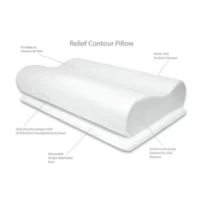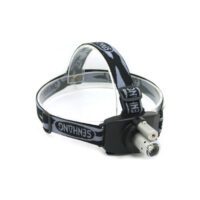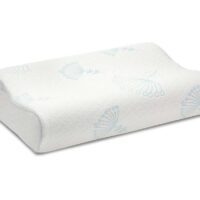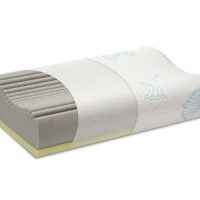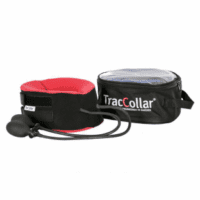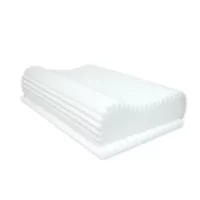Neck Headache
Article by J. Miller, S.Armfield

Neck Headache
Understanding and Treating Cervicogenic Headaches
Issues within the neck joints often lead to neck headaches, also recognised as cervicogenic headaches. Manifesting at the base of the skull or upper neck, clinical evidence suggests that neck headaches account for 4% to 22% of all clinical headache cases. Unlike migraines, neck headaches respond to neck-based physiotherapy, often providing instant pain relief or change.
Identifying Symptoms of a Neck Headache
If you experience neck stiffness, tenderness, and limited movement, you might be suffering from a neck headache. A headache physiotherapist should evaluate and diagnose your condition. While imaging tests alone cannot confirm this headache type, they can reveal the neck structures that may be causing your pain. When physiotherapy doesn’t resolve the issue, further testing might be necessary to pinpoint and address other types of headaches.
The Experience of a Cervicogenic Headache
You may recognise a cervicogenic headache by pain that begins at the skull’s base and travels towards the front of the head. Neck movements, specific postures, or turning the head can trigger or alleviate the headache, which typically persists on one side of the head. Neck pressure or massages might offer temporary relief. Consult a physiotherapist if these symptoms sound familiar to discuss diagnosis and treatment options.

Diagnosing Your Headache for Effective Treatment
Distinguishing neck headaches from migraines is crucial for proper treatment. A healthcare professional experienced in diagnosing cervicogenic headaches will evaluate your symptoms and medical history, possibly recommending additional tests to exclude other conditions.
Duration of Neck Headache
The length of a neck headache varies with its cause and treatment effectiveness. Durations can range from hours to months. Even if your neck feels normal, you could experience a headache, so consult a physiotherapist for a thorough evaluation, especially if persistent head pain is a concern.
Role of Imaging in Diagnosing Neck Headaches
Imaging tests, such as X-rays, CT scans, and MRIs, can identify structural neck issues but not diagnose neck headaches specifically. If head pain persists, cervical spine X-rays, coupled with a physical exam and clinical history, can inform your treatment plan. Your physiotherapist will advise on the necessity of these tests.
Multifaceted Cervicogenic Headache Treatment
Effective relief from cervicogenic headaches often requires a multi-modal approach, especially if a single treatment modality proves ineffective.
Neck Headache Physiotherapy
Physiotherapy is a common treatment for headache relief, involving joint mobilisations, neck muscle strengthening, posture improvement, and more.
Persistent Headaches: Next Steps
Inform your physiotherapist if your headache continues despite treatment. They will re-evaluate your treatment plan and may refer you to a specialist neurologist or recommend further testing to identify and treat the headache’s root cause.
Remember, determining the underlying cause of your headache can be intricate, but your physiotherapist will steer you toward the most effective treatment.
Conclusion
In summary, if you’re grappling with a persistent headache, it’s critical not to ignore the symptoms. With a comprehensive approach to diagnosis and treatment, physiotherapy offers a promising path to relief and recovery. Don’t let neck pain and headaches diminish your quality of life. Our dedicated team of physiotherapists is ready to assess, diagnose, and create a tailored treatment plan just for you.
Book Your Appointment Today
Take the first step towards a pain-free life. Contact us now to book an appointment and let us help you move beyond the pain of cervicogenic headaches. Your journey to wellness begins with the right care—book for your assessment today.
Related Articles
- What’s Causes Cervicogenic Headache? – This article explores the treatment plans for cervicogenic headaches and emphasises the importance of addressing the underlying causes.
- Cluster Headaches – Discusses different types of headaches, including cervicogenic headaches, and offers insights into neck-related headaches and their treatment.
- Headache Causes – A comprehensive article that covers various types of headaches, including neck headaches, and provides FAQs about cervicogenic headaches.
- Severe Headache Symptoms: Urgent Red Flags & Care – Focuses on headache symptoms and includes information on various treatment methods like ice and heat applications.
- Effective Cervical Facet Joint Pain Management – While focusing on cervical facet joint pain, this article is relevant due to the neck’s involvement in cervicogenic headaches.
- Tension-Type Headaches – Relevant due to the connection between neck issues and tension-type headaches, often confused with cervicogenic headaches.
- TMJ Headaches – Includes information on TMJ headaches, which can be related to cervicogenic headaches due to the involvement of neck muscles and posture.
- Migraine vs Headache – Offers a comparative analysis of migraines and headaches, which is useful for understanding cervicogenic headaches in the broader context of headache disorders.
- Neck Strengthening – What Specific Exercises To Do & Why – Relevant for readers seeking to strengthen neck muscles, potentially reducing the risk of cervicogenic headaches.
- Neck Posture Correction – The importance of good posture, which is a key factor in preventing and managing neck-related headaches.










